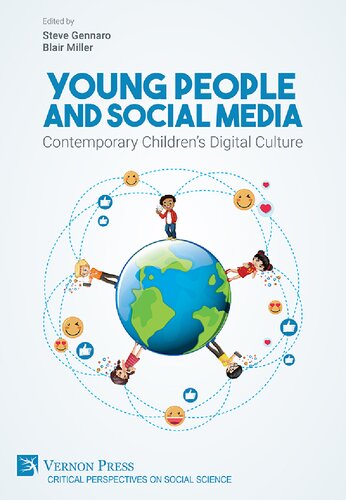

Most ebook files are in PDF format, so you can easily read them using various software such as Foxit Reader or directly on the Google Chrome browser.
Some ebook files are released by publishers in other formats such as .awz, .mobi, .epub, .fb2, etc. You may need to install specific software to read these formats on mobile/PC, such as Calibre.
Please read the tutorial at this link: https://ebookbell.com/faq
We offer FREE conversion to the popular formats you request; however, this may take some time. Therefore, right after payment, please email us, and we will try to provide the service as quickly as possible.
For some exceptional file formats or broken links (if any), please refrain from opening any disputes. Instead, email us first, and we will try to assist within a maximum of 6 hours.
EbookBell Team

5.0
100 reviews'Young People and Social Media: Contemporary Children's Digital Culture' explores the practices, relationships, consequences, benefits, and outcomes of children's experiences with, on, and through social media by bringing together a vast array of different ideas about childhood, youth, and young people's lives. These ideas are drawn from scholars working in a variety of disciplines, and rather than just describing the social construction of childhood or an understanding of children's lives, this collection seeks to encapsulate not only how young people exist on social media but also how their physical lives are impacted by their presence on social media.
One of the aims of this volume in exploring youth interaction with social media is to unpack the structuring of digital technologies in terms of how young people access the technology to use it as a means of communication, a platform for identification, and a tool for participation in their larger social world. During longstanding and continued experience in the broad field of youth and digital culture, we have come to realize that not only is the subject matter increasing in importance at an immeasurable rate, but the amount of textbooks and/or edited collections has lagged behind considerably. There is a lack of sources that fully encapsulate the canon of texts for the discipline or the rich diversity and complexity of overlapping subject areas that create the fertile ground for studying young people's lives and culture. The editors hope that this text will occupy some of that void and act as a catalyst for future interdisciplinary collections.
'Young People and Social Media: Contemporary Children's Digital Culture' will appeal to undergraduate students studying Child and Youth Studies and-given the interdisciplinary nature of the collection- scholars, researchers and students at all levels working in anthropology, psychology, sociology, communication studies, cultural studies, media studies, education, and human rights, among others. Practitioners in these fields will also find this collection of particular interest.